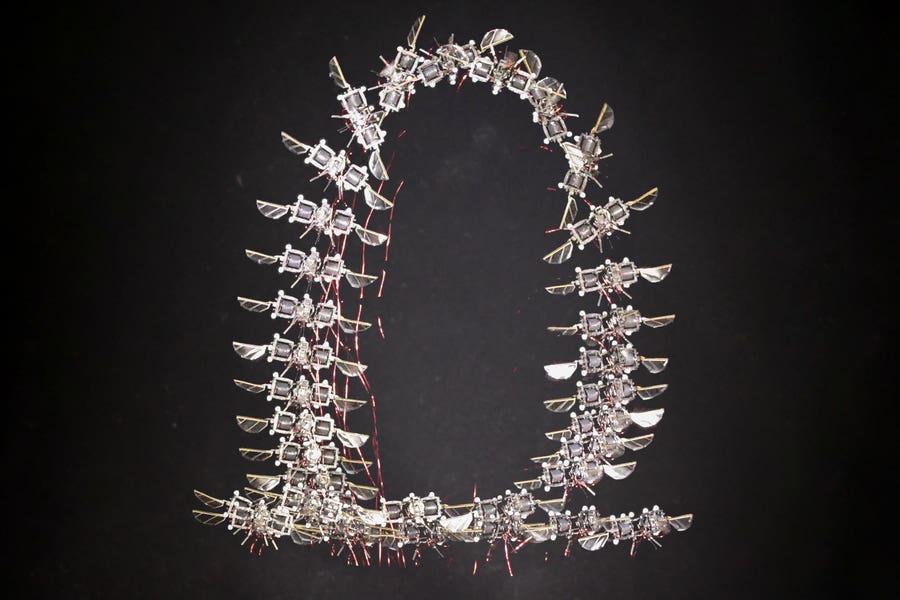Cutting-edge cancer treatment inspired by the foam on your latte
Inspired by the foam on lattes, biocompatible materials may improve the effectiveness of chemotherapy and radiation for treating cancers.

[Feb. 4, 2023: Jennifer Brown, University of Iowa Health Care]
Inspired by the foam on top of lattes, biocompatible materials may improve the effectiveness of chemotherapy and radiation for treating cancers. (CREDIT: Creative Commons)
Hypoxia is a condition that drives lack of responses to a wide array of cancer therapies. It arises because the rapid growth of tumors can lead to aberrant vascular proliferation and create heterogenous areas of low oxygen pressure and hypoxic stress. This hypoxic stress can in turn force a more aggressive phenotype characterized by increased invasiveness and metastasis, and when chronic, such stress can further lead to the development of resistance to chemotherapy, radiation, or immunotherapy.
The hypoxic environment contributes to nutrient deficits and acidosis, and this accelerates stress in the tumor microenvironment, ultimately, impairing the response to therapy. Because all cancer types are characterized by hypoxia in and surrounding the tumor, this condition has long been recognized as a target for therapies; however, altering the tumor microenvironment has proven technically challenging.
Inspired by the foam on top of lattes, as well as gummy bears and Pop Rocks candies, researchers at the University of Iowa are creating new, biocompatible materials that may improve the effectiveness of chemotherapy and radiation for treating cancers.
The new materials are known as gas-entrapping materials, or GeMs, which can be formulated as foams, solids, or hydrogels, and are designed to carry high concentrations of a variety of therapeutic gases directly into tissues, including tumors.
Related Stories
In a new study, published in the journal Advanced Science, researchers led by James Byrne, MD, PhD, and Jianling Bi, PhD, at the UI, used GeMs to deliver high levels of oxygen directly into tumors. The study showed that this improved the effectiveness of standard chemotherapy and radiation treatments in mouse models of prostate cancer and a type of sarcoma.
In addition to Byrne, Bi and their colleagues at the UI, the study was a multi-institutional effort involving researchers at Massachusetts Institute of Technology, Beth Israel Deaconess Medical Center, and Harvard Medical School.
“We’ve known for a long time that if you increase the amount of oxygen within a tumor you can make it more responsive to radiation, certain chemotherapies, and even potentially immunotherapies,” says Byrne, UI assistant professor of radiation oncology and a member of Holden Comprehensive Cancer Center at the UI. “However, the challenge has been how to deliver an effective dose of oxygen in a safe, controlled fashion.”
A reverse-engineered whipping siphon dispenses gas-entrapping foam in the University of Iowa lab of James Byrne, MD, PhD. Byrne focuses on the use of molecular gastronomical techniques to create novel materials for the treatment for cancer. (CREDIT: University of Iowa Health Care)
The new study shows that GeMs can significantly increase oxygen levels within solid tumors and render the cancer cells more vulnerable to radiation or chemotherapy. The increased oxygen levels also appeared to improve immune reactivity, which is key to generating a response to immunotherapy.
“These GeMs are very simple, with just three ingredients: the gas, the foaming agents, and the thickening agent,” says Byrne, who also is a UI assistant professor of biomedical engineering. “We use several unique, custom-built pressurized systems to incorporate high concentrations of gas into small volumes of these biocompatible materials, which can be injected or implanted into tissues and allow for prolonged, controlled release of the gas.”
Dr. Byrne, pictured in his lab, holds a whipping siphon that was reverse-engineered to accept any gas. (CREDIT: University of Iowa Health Care)
The foam GeMs, for example, are created using a whipping siphon—essentially the same device baristas use to make foams on hot chocolate and frozen coffee drinks—but reverse-engineered to accept various gases, including oxygen.
The lab’s whipping siphons use safe, low-cost components found in many processed foods to make the GeMs. By varying the quantity of each component, the researchers can control the release of oxygen from the material. Because the GeMs are manufactured with safe and edible components, Byrne notes that the translatability of these materials for cancer care is likely to be extremely high.
Schematic diagram illustrating how O2-GeMs are fabricated and incorporated into clinically relevant therapies for treatment-refractory tumors, such as MPNSTs. (CREDIT: Advanced Science)
Another advantage is the ability to implant or inject GeMs directly into the tumor. Intratumoral delivery of cancer therapies is an approach that has blossomed over the past decade due to the ability to achieve high concentrations of drugs inside the tumor with low side effects. The foams, in particular, can be injected into areas of the tumor that are harder to treat or remove by surgery.
“One of the aspects of this project that really excited me was the combination of cancer biology principles with material science to create something that can be really impactful,” says study first author Bi, a research scientist in Byrne’s lab.
In addition to Byrne, Bi and their colleagues at the UI, the study was a multi-institutional effort involving researchers at Massachusetts Institute of Technology, Beth Israel Deaconess Medical Center, and Harvard Medical School.
Note: Materials provided above by University of Iowa Health Care. Content may be edited for style and length.
Like these kind of feel good stories? Get the Brighter Side of News' newsletter.



